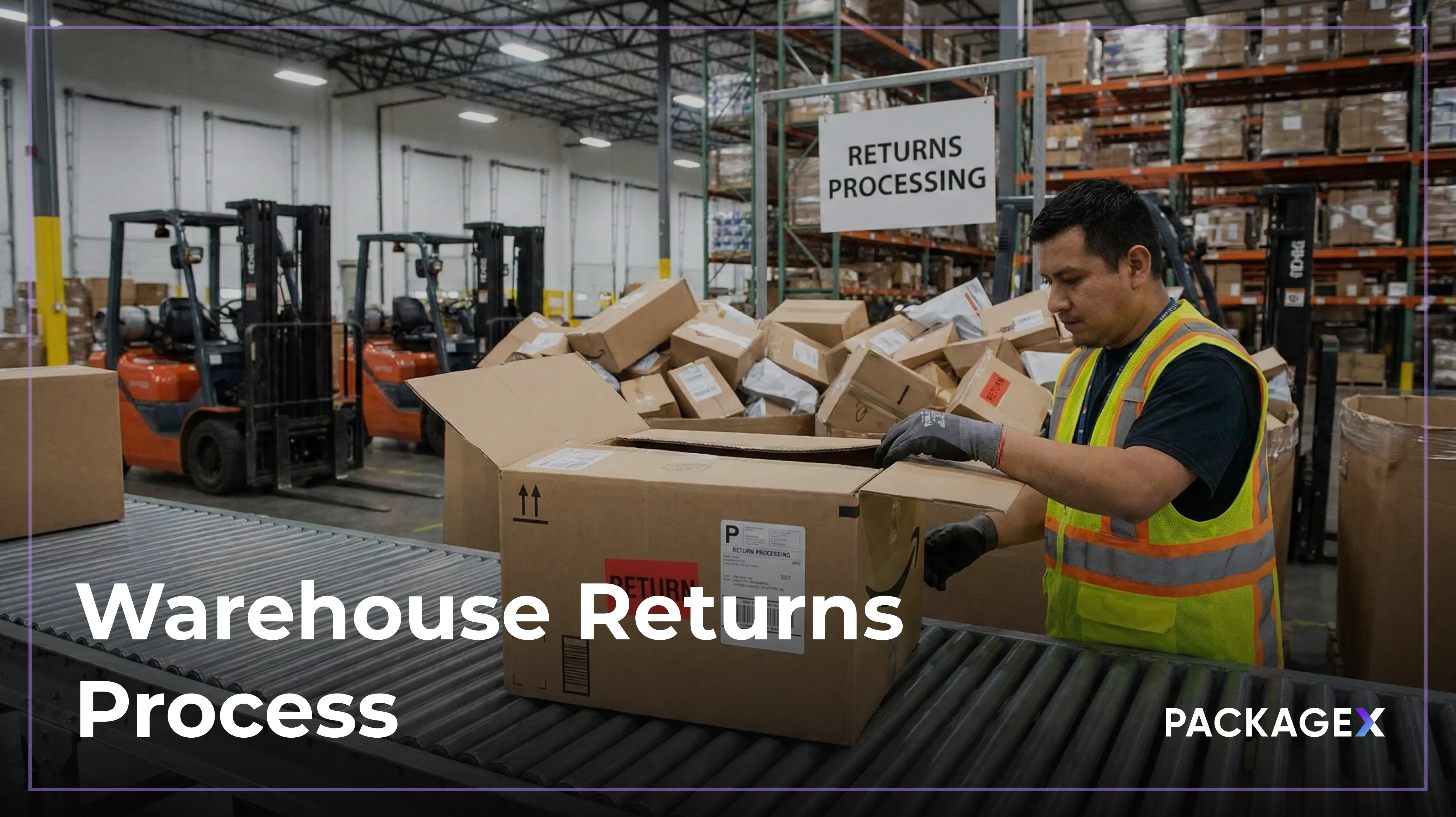Your system says you have 500 products in stock, but your team finds only 485 on the shelves. A few might be damaged or misplaced, yet those small gaps can cost money and credibility. Many businesses face this challenge, and it often starts with inaccurate records.
When inventory numbers don’t match, it affects everything from cash flow to customer satisfaction. In today’s fast-paced industries, inventory accuracy drives profitability and compliance. Businesses that track and trace their physical stock consistently prevent fraud. It also helps keep financial statements reliable.
Maintaining clear visibility into what’s on hand and what’s sold also supports smoother warehouse operations. It helps managers plan better, control costs, and maintain trust with suppliers and customers.
The global supply chain market is projected to grow at a CAGR of 11% from 2024 to 2030, reaching nearly $47 billion. Companies now rely on smart inventory audit processes to ensure data accuracy and compliance.
In this blog, we’ll explore what inventory auditing is, how it works, and the best practices for auditing inventory effectively.
What Is an Inventory Audit?
An inventory audit is the process of verifying a company’s physical stock and comparing it with the records in its accounting or inventory management system. The goal is to make sure everything matches. What’s in your books should be what’s on your shelves. This process helps confirm that stock levels are accurate, financial statements are reliable, and any gaps or errors are caught early.
Think of it as a health check for your inventory. During the audit, teams count and inspect products, note their condition, and ensure all numbers align. If the system shows 500 units but only 480 are actually in the warehouse, the audit highlights the discrepancy so it can be corrected.
Inventory auditing ensures financial transparency and operational efficiency. For instance, if some products are damaged or missing, the audit helps identify whether it’s due to theft, data entry errors, or process issues. This accuracy matters for pricing, budgeting, and maintaining customer trust.
Why Inventory Auditing Is Important?
Inventory auditing plays a vital role in keeping a business’s finances. It’s about knowing where your money is tied up, how efficiently your systems work, and whether your financial reports tell the whole story.
Financial Accuracy
Inventory auditing keeps financial reports honest and reliable. When physical counts match recorded data, companies avoid costly balance-sheet misstatements. Regular auditing of inventory procedures also ensures compliance. This is why many inventory management companies focus heavily on reconciliation and record checks.
Loss Prevention
One of the biggest benefits of an inventory audit is preventing loss. Shrinkage from theft, spoilage, or damaged goods can quietly reduce profits. A proper inventory count during auditing helps catch these issues early. For example, if a warehouse inventory management system records 1,000 units but a physical count finds only 950, the audit exposes the gap. Identifying such patterns allows managers to fix the cause before losses grow.
Operational Efficiency
Auditing inventory improves day-to-day efficiency. It helps balance stock levels, reducing storage costs and freeing up cash flow. Companies that use inventory auditing technology often discover overstocked items. Or, in some cases, slow-moving goods that can be phased out. This results in smoother warehouse operations and lower holding costs.
Smarter Decision-Making
A reliable inventory control system supports confident decisions. Managers can forecast demand, plan purchases, and set prices using real data rather than assumptions. Audit-driven decision-making leads to fewer stockouts, better profit margins, and stronger long-term growth.
Key Components of an Inventory Audit
A proper inventory audit is about checking that every record matches the actual stock. And that the information in your books reflects reality.
Below are the key components that form a complete and reliable audit process.
1. Physical Count
This is the starting point of every audit. Teams manually count each item and compare the results to system records. A careful auditing inventory count helps identify missing, damaged, or misplaced goods. Using barcode scanners or mobile tools makes counting faster and improves accuracy.
2. Condition & Quality Check
Numbers alone don’t tell the whole story. Auditors check each item for damage, spoilage, or signs of wear. This ensures the valuation of goods is correct. This also prevents overreporting assets in your auditing inventory account.
3. Record Reconciliation
Once counts and quality checks are done, the next step is inventory auditing and reconciliation. This involves matching physical data with recorded figures. Any gaps or differences are noted for correction as part of the inventory verification steps.
4. Discrepancy Investigation
When mismatches appear, auditors investigate the cause. Common reasons include entry mistakes, missing items, or theft. Resolving these quickly keeps stock data accurate and avoids long-term reporting problems.
5. Cost Verification (COGS)
This step ensures the cost of goods sold analysis is accurate. Auditors review purchase and sales records to confirm that the ending inventory reflects actual costs. Correct COGS calculations lead to more reliable financial statements.
6. Internal Controls Review
Finally, auditors evaluate internal audit controls that keep inventory processes secure. This includes checking approval workflows and software systems. It also helps in reporting methods to prevent fraud and improve data integrity.
Together, these inventory audit procedures help maintain financial accuracy across your business.
Common Inventory Audit Procedures
Inventory auditing procedures help confirm that the numbers in your system match what’s actually sitting on your shelves. Each method offers a different angle for accuracy, efficiency, and financial reliability.
Here are some of the most standard audit procedures businesses use today.
1. Physical Inventory Count
This is the foundation of every audit. Teams count every item in stock and compare it with the recorded data. It’s a straightforward way to spot missing or damaged goods and is often used in cycle count audits to keep ongoing accuracy. Barcode scanners or mobile apps make this process faster and reduce human error.
2. Random Sampling
Instead of counting everything, auditors select a sample of items to test accuracy. This method saves time while still providing reliable results. Sampling techniques in auditing work best for large warehouses or companies with stable inventory systems.
3. Cutoff Analysis
A cutoff analysis pauses shipping and receiving during the count to prevent stock movement. It ensures transactions are recorded in the correct period, improving financial reporting accuracy.
4. ABC Analysis
Here, inventory is divided into A, B, and C groups based on value and importance. “A” items are high-value and need close control, while “C” items are low-cost and reviewed less often. This prioritization keeps auditing efficient and focused.
5. Overhead and Freight Cost Analysis
These real-time inventory valuation audits go beyond counting goods. They assess storage, shipping, and handling costs to show the actual value of inventory. Tracking these numbers helps refine pricing and budgeting decisions.
6. Finished Goods Valuation and Reconciliation
Substantive audit procedures for inventory include verifying finished goods ready for sale and reconciling them with records. This step highlights discrepancies. This greatly helps teams uncover causes such as recording errors or misplaced items. Before they affect financial statements.
Step-by-Step Process to Conduct an Inventory Audit
Running a successful inventory audit doesn’t have to feel overwhelming. With a clear plan, the right tools, and consistent follow-through, you can complete it efficiently and accurately.
Here’s a step-by-step audit checklist that helps you organize the process from start to finish.
1. Set Clear Objectives
Start by defining what you want to achieve. Are you verifying physical stock, checking accuracy in financial records, or identifying slow-moving items? Clear goals shape your audit strategy and make results easier to interpret.
2. Prepare Documentation
Gather all inventory documentation before you begin. This includes purchase orders, invoices, stock receipts, and prior audit reports. Having these records ready ensures a smooth, systematic audit execution.
3. Organize and Label Inventory
Make sure every product is easy to find and correctly labeled. Proper organization reduces confusion and speeds up real-time stock counting. Use barcodes or inventory-auditing technology to quickly log items and minimize manual errors.
4. Train Staff or Involve External Auditors
Everyone involved should understand the audit process. Train your team to follow consistent counting methods, or bring in external auditors for an unbiased review. Good training prevents double-counts and missed items.
5. Conduct the Audit
Now it’s time to count. Compare actual stock against system records and note discrepancies. Follow a structured workflow for auditing inventory to ensure consistency across locations or departments.
6. Reconcile Results
Reconciliation is where insights appear. Match your findings to accounting data and investigate mismatches. This inventory reconciliation workflow helps uncover issues such as shrinkage, misplaced goods, and system errors.
7. Report Findings
Document your results and share them with key stakeholders. Include what worked, what needs fixing, and recommendations for the next audit. A clear report makes follow-up actions easier and builds accountability.
By following these inventory audit procedures, you’ll have reliable data to make smarter business decisions and improve accuracy over time.
Common Challenges in Inventory Auditing
Auditing inventory can sound simple on paper, but in real-world operations, a few common hurdles often emerge. These challenges affect accuracy, time, and overall efficiency.
- Time-consuming process: A full inventory audit can take days. Every pause in shipping or receiving adds up. Many companies now rely on inventory auditing technology, such as barcode scanners or RFID systems, to save hours and reduce manual effort.
- Human and technical errors: Miscounts, data entry slips, or syncing issues between systems can lead to common audit errors and inaccurate reports. Using reliable tools and cross-checking records helps lower these risks.
- Operational disruptions: Stopping warehouse activity for audits can cause warehouse disruption during audits. Planning audits during off-peak hours or using cycle counts keeps workflows steady.
- Scalability issues: As businesses grow, so do audit scalability issues. Automation and cloud-based tools simplify auditing inventory procedures across multiple locations.
- Fraud and mismanagement: Poor controls invite inventory shrinkage risks. Regular reconciliations, oversight, and transparent processes help detect and prevent fraud early.
Best Practices for Effective Inventory Auditing
With the right mix of tools, habits, and people, you can turn auditing into a smooth, repeatable process that keeps your data clean and your operations running efficiently.
- Use smart inventory management software: Cloud-based inventory audit solutions give you real-time visibility into what’s in stock, what’s moving, and what needs attention. Many inventory auditing companies offer platforms with built-in reporting and automated alerts.
- Implement RFID or barcode systems: Scanning items instead of counting by hand reduces human error and speeds up audits. RFID and barcode systems also support continuous inventory monitoring.
- Schedule regular audits: Monthly or quarterly checks help catch minor issues before they turn into bigger problems.
- Utilize AI-driven reconciliation tools: The best inventory tools for application auditing use machine learning to flag anomalies and ensure records stay accurate.
Inventory Audit Checklist
An organized inventory audit checklist keeps the process smooth and consistent. Whether you’re using an Excel audit sheet or a digital tracking system, this simple template helps ensure nothing slips through the cracks.
Here’s a practical, step-by-step stock verification list:
- Define the scope: Decide what areas or product categories you’ll audit. Start small if it’s your first time.
- Collect records: Gather invoices, purchase orders, and system reports before the count begins.
- Label items: Tag products or storage bins so everything can be traced easily.
- Verify quantities and condition: Count what’s on the shelf and check for damage or expired items.
- Record discrepancies: Note any mismatches between physical and recorded data in your Excel audit checklist.
- Generate a final report: Summarize results in a sample audit report to share with your team.
- Review and improve procedures: Use the findings to refine your next inventory audit template and avoid repeat issues.
Why Leading Enterprises Trust PackageX for Smarter Inventory Auditing?
PackageX helps organizations move beyond manual reconciliation and into the future of AI-powered inventory audit systems built for speed and accuracy.
Here’s why forward-thinking teams rely on PackageX to transform how they audit inventory and reconcile stock:
- Automated accuracy checks: Replace manual counts with real-time scanning. That instantly verifies quantities and conditions, cutting human error and saving hours per audit.
- Seamless reconciliation workflows: PackageX syncs physical counts with system records for precise inventory auditing and reconciliation. This ensures every item is accounted for.
- Centralized visibility: Manage audits across multiple warehouses or sites from one dashboard. This maintains a unified view of your assets and performance.
- Continuous improvement insights: Track trends and discrepancies over time to support continuous inventory improvement.
- Scalable AI technology: Future-proof your operations with intelligent tools that adapt to growing product lines, locations, and compliance needs.
FAQs
What is the difference between stocktaking and auditing?
Stocktaking is the process of physically counting inventory to confirm quantities on hand, while an inventory audit goes deeper. It verifies both quantity and value to ensure financial records match actual stock. Auditing also checks for errors, shrinkage, and compliance.
What is the difference between an inventory audit and a stock take?
A stock take is a basic physical count of items to confirm quantities. In contrast, an inventory audit is a comprehensive financial verification that ensures stock quantities, values, and records are accurate. In essence, stocktaking measures; auditing validates and analyzes.
What are substantive audit procedures for inventory?
Substantive audit procedures for inventory include physical verification, cutoff testing, valuation review, and record reconciliation with financial statements. These ensure inventory accuracy, detect discrepancies, and validate the company’s reported asset values.




